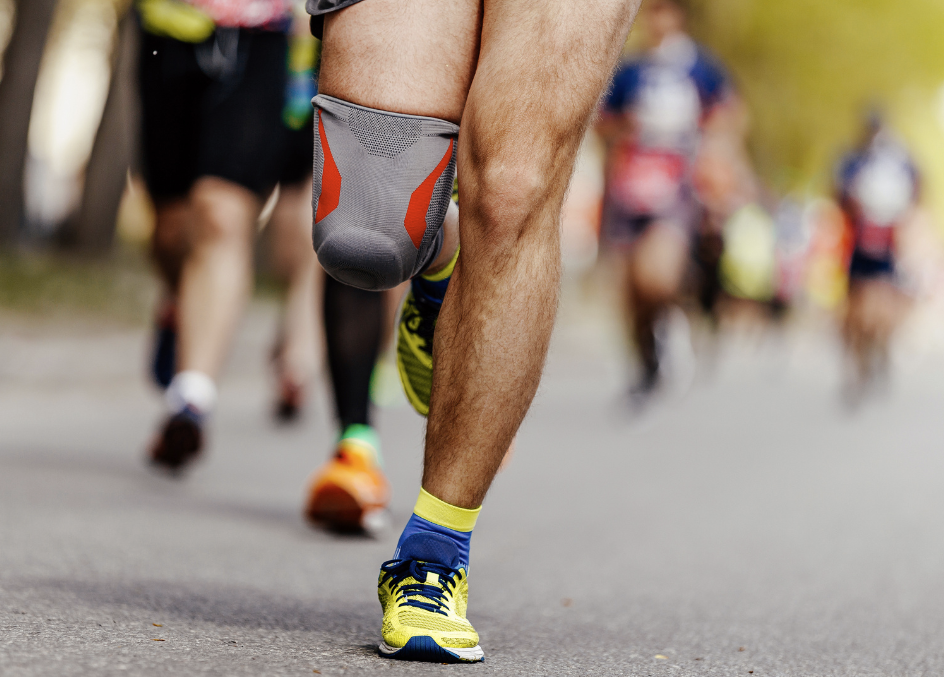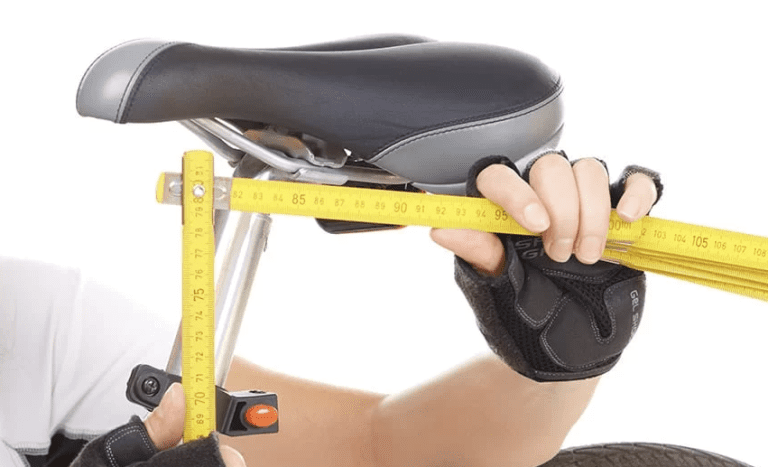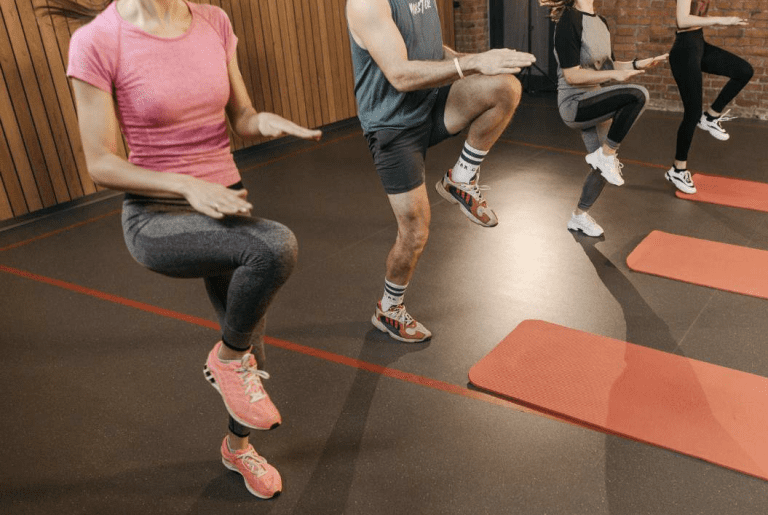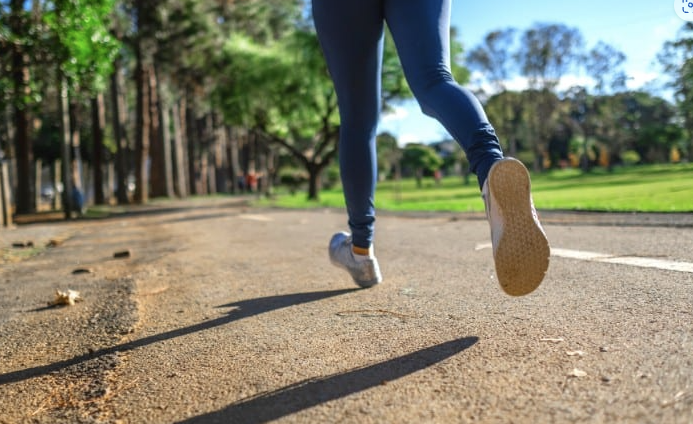Can you jog after knee replacement? This question often lingers in the minds of individuals considering a knee surgery. In this comprehensive blog post, we will explore how advancements in total and partial knee replacements have improved functional outcomes for patients.
We delve into the controversial topic of running post-knee replacement, highlighting various studies that support high-impact activities and presenting views from health organizations. The differences between engaging in sports after partial and full knee replacements are also discussed to help clarify common misconceptions.
Furthermore, we emphasize on the importance of regular training sessions post-surgery, especially strength training for better recovery. Inspiring stories from individuals who resumed active lifestyles like Richard Donovan’s 3,200-mile run across America and former Olympian Joan Benoit Samuelson’s Boston Marathon journey would be shared to motivate readers.
The role of innovative techniques such as robotic assisted surgeries by Dr Kevin R Stone in treating arthritis is also touched upon. So let’s dive deep into understanding if one can indeed jog after a knee replacement!
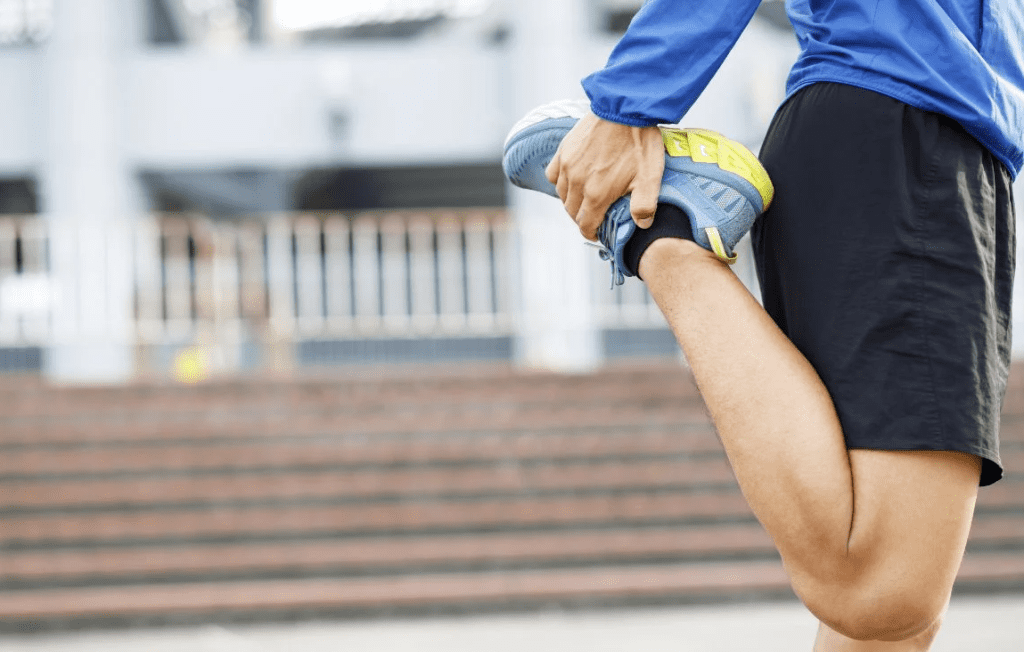
The Evolution of Knee Replacement Surgery
Medical science has come a long way in improving knee replacement surgeries. These advancements have given a new lease on life to individuals suffering from severe knee issues, allowing them to return to their active lifestyles post-surgery.
Understanding the progress in knee replacement techniques
In the past, knee replacements were considered a last resort for people with debilitating arthritis or injury. The procedure was invasive and recovery time lengthy. However, modern surgical methods have revolutionized this process by using minimally invasive techniques that reduce pain and speed up recovery time.
Partial knee replacements are now preferred over Total Knee Replacements (TKR) whenever possible. This approach preserves more of the patient’s natural joint structure leading to better functional outcomes.
How modern surgical methods improve functional outcomes
Newer procedures like robotic-assisted surgery offer unprecedented precision during operation which leads to less tissue damage and quicker healing times compared to traditional manual surgeries. Additionally, 3D printing technology has been employed to manufacture custom-made implants that are tailored specifically for each person’s anatomy, thus promoting better comfort and efficacy over a long period.
Besides these technological advances, there is also a shift towards personalized rehabilitation programs post-surgery designed to help patients regain strength and mobility faster than ever before. These include physiotherapy exercises, balance training, gait retraining, among others, ensuring a smoother transition back to normal activities, including sports in some cases.
Running Post-Knee Replacement – A Controversial Topic
The debate on whether it’s safe to run or jog after a knee replacement surgery has been ongoing for years. While some research studies have shown promising results, others suggest caution due to potential risks.
Studies supporting running after surgery
A study found that jogging post-surgery had no negative effect on implant survival rates, indicating that running is a safe activity following surgery. So, don’t let anyone tell you that you can’t run like the wind after surgery.
Health organizations’ stance on high impact activities post-knee replacements
However, health organizations such as the National Health Service (NHS) and American Academy of Orthopaedic Surgeons (AAOS) advise against high-impact sports like running post-surgery. The NHS guidelines suggest low-impact exercises like swimming or cycling instead while AAOS recommends walking, golfing or biking. Boooring.
This difference in opinion stems from concerns about excessive wear and tear on the artificial joint which could potentially lead to complications down the line. It is also believed that these strenuous activities may increase inflammation around the new joint leading to discomfort and pain. But hey, no pain no gain, right?
In light of this controversy, it becomes crucial for individuals considering knee replacement surgeries to discuss their long-term fitness goals with their surgeons beforehand. Each case is unique depending upon factors such as age, overall health condition and lifestyle habits among others so what works for one person might not work for another.
If you’re an avid runner contemplating a knee replacement procedure then make sure you understand both sides of this argument before making your decision. Remember there are alternatives available too like partial knee replacements which allow more flexibility regarding physical activity but come with their own set of pros and cons. Consider reading this piece for further details.
The safety of running or jogging after knee replacement surgery is a controversial topic, with some studies showing positive results while health organizations advise against high-impact activities due to potential risks. It’s important for individuals considering the surgery to discuss their long-term fitness goals with their surgeon and understand both sides of the argument before making a decision. Remember, there are alternatives available such as partial knee replacements that allow more flexibility regarding physical activity but come with their own set of pros and cons.
Sports Participation After Partial & Full Knee Replacements
Don’t let a knee replacement surgery stop you from being active. Contrary to popular belief, many people with partial or full knee replacements continue to participate in sports activities they love.
Examples of Sports People Can Do After Surgery
There are plenty of sports options available after knee replacement surgery. From low-impact exercises like swimming and cycling to more intense activities such as golf, tennis, and skiing. Some patients have even been able to run post-surgery. For instance, Richard Donovan ran across America following his robotic partial-knee-replacement procedure conducted by Dr. Kevin R Stone.
Difference Between Partial and Total Replacements Regarding Physical Activity
The extent of physical activity post-surgery depends on whether you had a partial or total knee replacement. A partial knee replacement (PKR) is less invasive than a total one, allowing for quicker recovery times and greater flexibility when it comes to resuming sports activities. Though a TKR requires longer rehabilitation, with the help of your doctor and physiotherapist you can safely return to activities that won’t strain your new joint.
However, this shouldn’t discourage you from pursuing an active lifestyle after surgery. It’s important to work closely with your doctor and physiotherapist during your recovery process to safely return to doing what you love most without compromising your new joint’s longevity.
Remember, each individual’s experience will be distinct, depending on elements like age, health condition and general fitness level. So, always prioritize your safety first.
Importance of Regular Training Sessions Post-Surgery
The road to recovery after knee replacement surgery doesn’t end in the operating room. It’s just the beginning of your journey towards reclaiming an active lifestyle. Regular training sessions are crucial to restore optimal body mechanics and speed up your recovery.
Why Balanced Training Programs are Essential for Recovery
A balanced training program is pivotal in improving functional outcomes post-surgery. It helps you regain strength, flexibility, balance, and endurance – all essential for daily activities and sports participation. Mayo Clinic suggests exercises like leg raises, ankle pumps, and heel slides that can be incorporated into your routine under professional guidance.
Addressing Joint Instability and Shock Absorption
Besides muscle strengthening, it’s equally important to address joint instability issues if limping was a problem before surgery. The right kind of exercise regimen not only improves stability but also enhances shock absorption capacity, thereby reducing progressive wear on the replaced joint over time. Arthritis Health suggests working with physical therapists who are skilled at designing personalized programs based on individual needs.
If you’re an athlete or love running outdoors, don’t lose heart. With consistent efforts and careful planning around these training sessions post-surgery, you can gradually return to doing what you love most while ensuring long-term health benefits for your new knee.
- Stay Consistent: Stick with your exercise routine even when progress seems slow initially.
- Pace Yourself: Don’t rush into high-intensity workouts immediately after surgery; start slow and gradually increase the intensity level under expert supervision.
- Vary Exercises: Mix different types such as cardio workouts, strength-training, and stretching routines to provide a comprehensive workout package.
Inspiring Stories From Individuals Who Resumed Active Lifestyles
One of the most inspiring aspects of modern knee replacement surgery is hearing about individuals who have successfully returned to their active lifestyles. Despite the initial challenges posed by osteoarthritis and joint replacements, these stories serve as a beacon of hope for those considering similar procedures.
The Story Behind Richard Donovan’s 3,200-Mile Run Across America
Richard Donovan’s story stands out among them all. After undergoing a robotic partial-knee-replacement procedure conducted by Dr. Kevin R Stone, he embarked on an ambitious journey that many thought impossible – running across America. He set out on an incredible 3,200-mile journey from San Francisco to New York City. His unwavering commitment and fortitude are truly remarkable.
Former Olympian Joan Benoit Samuelson’s Marathon Journey
The tale of Joan Benoit Samuelson, former Olympic gold medalist in women’s marathon at the Los Angeles 1984 games, is equally compelling. Despite having both knees replaced due to severe arthritis over time, she didn’t let this stop her from pursuing her passion for running marathons again post-surgery. In fact, she went on to complete the Boston Marathon within thirty years of her winning time.
These remarkable individuals demonstrate not only physical resilience but also mental fortitude in overcoming obstacles associated with knee replacement surgeries. Their feats motivate us to continue striving towards our objectives, no matter the challenges life may present. Remember, everyone heals differently and has different pain thresholds, so always consult your doctor before embarking on strenuous activities after surgery.
Exercise Within Comfort Zones – An Expert Advice For Athletes
After knee replacement surgery, athletes often struggle with the trepidation of having to forgo intense physical activity. However, experts suggest that it’s not about completely abandoning your passion for fitness but rather adapting to a new routine within your comfort zones.
Dealing with High-Impact Workouts After Knee Replacement
A good example here is Jacqueline Hansen, a former marathon world record holder who had both her knees replaced due to osteoarthritis. Despite her surgeries, she continues to remain physically active and inspires many others in similar situations. Her story demonstrates that there are possibilities provided necessary precautions are taken.
The key lies in understanding your body’s limitations post-surgery and working within those boundaries while gradually pushing them as you recover strength and mobility over time. Here are some expert-recommended steps:
- Maintain Regular Physical Activity: This doesn’t necessarily mean running marathons immediately after surgery; instead, focus on low-impact exercises like swimming or cycling which can help maintain cardiovascular health without putting undue stress on the joints.
- Incorporate Strength Training: Building muscle around the joint can provide additional support and reduce strain during physical activities.
- Prioritize Flexibility And Balance Exercises: This will improve stability, reducing the risk of falls or injuries when engaging in sports or other high-impact activities.
Everyone’s healing process is distinctive – what works for one person may not be successful for another, so it’s essential to heed your body signs and talk with medical experts before making any major modifications to exercise regimens. Mayo Clinic advises, “Start slow at first and gradually increase intensity ensuring pain isn’t increasing.”
By taking a mindful approach and paying attention to body signals, it is possible for anyone – from athletes looking to resume intense training post-knee replacement to those just wanting to get back into regular exercise – to make progress no matter how small. Remember, every step towards progress counts no matter how small it might seem.
Athletes can continue to exercise after knee replacement surgery by adapting to low-impact workouts within their comfort zones. It’s important to understand your body’s limitations and gradually push them over time, while consulting with healthcare professionals and prioritizing flexibility, balance, and strength training exercises. Remember that everyone’s recovery journey is unique, so start slow and listen to your body signals before making any drastic changes to workout routines.
Longevity and Careful Approach with Partial Knee Replacements
Partial knee replacements are less invasive than full ones, but they still require a careful approach to ensure longevity. In this segment, we discuss how former Olympian Joan Benoit Samuelson hopes to earn the prestigious Abbott World Marathon Majors Six Star medal despite her problematic right knee. We also provide advice for those considering similar paths.
Achieving Athletic Goals with Partial Knees
The journey of an athlete doesn’t necessarily end after undergoing a partial knee replacement. Joan Benoit Samuelson, an Olympic gold medalist in marathon running and a testament to determination and grit, has undergone surgery on her right knee yet continues to compete. Her story is not just about determination and grit but also about understanding your body’s limits and taking necessary precautions.
Benoit Samuelson has set her sights on earning the Abbott World Marathon Majors Six Star medal – a feat achieved by completing six major marathons worldwide. Despite having undergone partial knee replacement surgery, she remains optimistic about reaching this goal.
In addition to maintaining an active lifestyle post-surgery, it’s important for athletes like Benoit Samuelson to take proper care of their replaced knees. Here are some tips:
- Maintain Regular Exercise: Consistent low-impact exercises such as swimming or cycling can help strengthen muscles around the joint without putting excessive strain on it.
- Pace Yourself: Avoid overexertion, which could lead to injury or further damage.
- Frequent Check-ups: Regular visits with your doctor can help monitor progress and address any potential issues early on. (source)
The path towards achieving athletic goals post-partial-knee-replacement may be challenging but certainly possible with careful planning and appropriate medical guidance. Remember that every individual’s recovery process is unique, so always consult your healthcare provider before resuming strenuous activities post-surgery.
The article discusses the possibility of jogging after a partial knee replacement surgery. It highlights the story of former Olympian Joan Benoit Samuelson who continues to compete in marathons despite undergoing surgery on her right knee. The article provides tips for maintaining an active lifestyle post-surgery, including regular exercise, pacing oneself and frequent check-ups with a doctor.
Innovative Techniques in Treating Arthritis by Dr. Kevin R Stone
When it comes to treating arthritis, especially in the knee joint, Dr. Kevin R Stone is a pioneer who’s breaking new ground with his innovative approach. He believes that keeping patients active helps build bone and muscle strength while also improving mental wellbeing.
Robotic-Assisted Surgeries for Better Outcomes
The cornerstone of Dr. Stone’s practice is robotic-assisted surgeries for tri-compartmental arthritis treatments. These procedures offer precision and accuracy that are unmatched by traditional surgical methods. They allow for less invasive surgery, quicker recovery times, and improved functional outcomes.
Not only does this type of treatment replace worn-out joints, but it also helps patients recover their mobility and resume an active lifestyle in a shorter time frame.
If you’re considering this type of treatment, Dr. Stone recommends asking your doctor about their experiences with these techniques – make sure you’re on the same page when discussing your options.
Tissue Regeneration Techniques: PRP Paired With Hyaluronic Acid
- PRP: Platelet-rich plasma (PRP) therapy uses injections of a concentration of a patient’s own platelets to accelerate the healing process in damaged joints.
- Hyaluronic acid: This naturally occurring substance works like a lubricant and shock absorber in the joint fluid, aiding movement and reducing pain.
A Balanced Training Program Post-Surgery
Beyond surgery itself, rehab begins the very next day with a training program designed around balance and gait improvement exercises. These workouts aim at restoring optimal body mechanics, especially if limping was an issue pre-surgery. The focus here is not just on getting back on feet but doing so confidently without fear or discomfort.
Additional Resources:
- Arthritis Foundation
- Mayo Clinic: Arthritis
FAQs in Relation to Can You Jog After Knee Replacement
Is jogging safe after a total knee replacement?
Yes, jogging can be safe after a total knee replacement, but it’s crucial to follow your doctor’s advice and rehabilitation plan for a safe recovery. Mayo Clinic
How can I safely resume running after knee surgery?
You can gradually increase your running intensity under professional guidance to safely resume running after knee surgery. Check out this guide on Healthline.
Conclusion
It’s a controversial topic, but studies and success stories show that it’s possible to return to an active lifestyle.
The key is to follow a balanced training program, listen to your body, and work within your comfort zones. Experts advise athletes with knee replacements to be careful and consider longevity when setting athletic goals.
Thanks to innovative techniques like robotic-assisted surgeries, patients have better outcomes than ever before.
So, lace up those sneakers and hit the pavement – just be smart about it!

